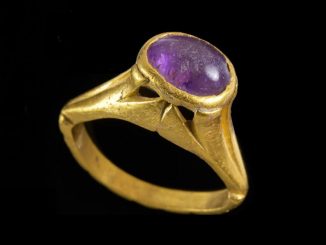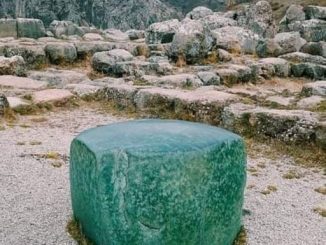Sadd-el-Kafara is considered the world’s oldest large-scale dam with a length of 113 m, a height of 14 m and a base width of 98 m.
Ruins of the Sadd-el-Kafara dam. Photo: Matthieu Gotz
About 40 kilometers southeast of Cairo, near the town of Helwan, are the ruins of Sadd-el-Kafara, a large-scale dam built about 3,700 years ago. Although it was destroyed by floods before it could be completed, this is still considered the oldest large-scale dam in the world.
The main purpose of the structure is to block water flow from sudden storms and severe floods. It may also have helped provide water for workers and animals involved in quarrying stone to build nearby pyramids and temples.
Sadd-el-Kafara is located at the narrowest point of the Wadi Garawi gorge, where the valley narrows to about 100 meters in width. German archaeologist Georg Schweinfurth discovered the ruins of Sadd-el-Kafara in 1885. Only the ends of the dam on both sides of the canyon still stand. The central part was swept away by the flood, leaving a gap 50 – 60 m wide. The exposed section allows archaeologists to study the dam’s construction process.
The original dam was 113 m long, 14 m high, base width was 98 m and crest width was 56 m. The dam’s core is 32 m wide and can hold 60,000 tons of rock and soil. If completed, the dam will hold 465,000 – 625,000 m3 of water.
Experts believe that Sadd-el-Kafara was built not for irrigation but to control flash floods, a phenomenon that often occurs in narrow valleys, due to the dam’s location in Wadi Garawi. There is no evidence that arable land around the dam requires water for agriculture. In addition, the lack of a spillway also shows that the reservoir does not serve irrigation purposes.
The downstream face of Sadd-el-Kafara shows signs of erosion, leading experts to believe that a flood destroyed the ancient structure. Additionally, the absence of a spillway and any trace of a ditch or water diversion tunnel around the construction site made the dam even more vulnerable to destruction.
The collapse of Sadd-el-Kafara probably caused catastrophic flooding downstream. The impression left by the disaster seemed so terrible that it made the ancient Egyptians not want to build more similar dams for nearly eight centuries.



